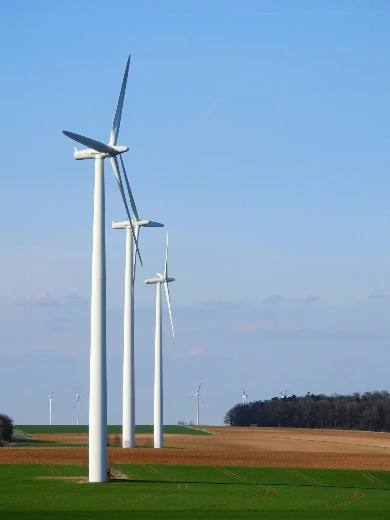Demand Flexibility Service
The Demand Flexibility Service is a significant step towards a flexible energy grid, where businesses and households are incentivised to help balance the grid during periods of high demand.
Last year, 2.6 million participants participated in the scheme, and some businesses have already earned hundreds of thousands of pounds by taking simple steps to reduce energy consumption when requested.
In this guide, we explain how the Demand Flexibility Service works and how your business can benefit from it. Here’s what we cover:
- Understanding the Demand Flexibility Service
- How the Demand Flexibility Service works
- Eligibility criteria for the Demand Flexibility Service
- How to join the Demand Flexibility Service
- How the Demand Flexibility Service serves the grid
Understanding the Demand Flexibility Service
The Demand Flexibility Service is a scheme that incentivises businesses and households to reduce electricity consumption during periods of peak demand.
By voluntarily cutting back on energy consumption when the grid is under stress, participants help maintain system stability and reduce reliance on costly, carbon-intensive backup power.
In return, they receive financial rewards, calculated based on their reduction in energy consumption compared with their typical usage.
Households are typically compensated with points or vouchers, which can be exchanged for rewards such as restaurant discounts or cinema tickets.
In contrast, businesses can generate significant credits towards their electricity costs by taking part in the scheme.
Drax Business Energy reported that one customer earned £600,000 last winter through participating in the scheme.
Demand Flexibility Service statistics 2023/24
The following summarises the impact of the flexibility events that occurred last winter:
- Events: 16 (14 of these were tests of the system but were paid as usual)
- Overall participation: 2.6 million homes and businesses
- Flexibility provided by businesses: 3.6 GWh
- Compensation range: 40 p/kWh to 600 p/kWh
The Demand Flexibility Service was first introduced in the winter of 2022/23, and the scheme’s rules are being refined by Ofgem to encourage greater participation.
The scheme is expected to expand significantly as the National Grid progresses towards achieving zero-carbon electricity by 2030.
How the Demand Flexibility Service works
The best way to understand how the Demand Flexibility Service works is to look at a step-by-step example of an existing business successfully using the scheme to receive a discount on their energy bills.
Our example is a medium-sized manufacturing business called “GreenTech Solutions”.
Step 1: Notification and preparation
At 9:00 AM, Sarah, the procurement manager at GreenTech Solutions, receives an email alert stating that a flexibility event has been scheduled for 5:00 PM to 6:00 PM later that day.
During this window, the National Grid will aim to reduce electricity consumption and will pay participants of the Demand Flexibility Service to lower their usage.
Step 2: Planning for the reduction
Sarah immediately arranges a meeting with the production manager and facilities team. Together, they devise a plan to reduce energy usage during the event.
It is agreed that one of two production lines (responsible for 200 kWh of business energy consumption per hour) will pause from 5:00 PM to 6:00 PM. The affected batch of products is rescheduled for completion during off-peak hours.
Step 3: Implementation during the event
The flexibility event begins at 5:00 PM, and the production team halts the identified production line as planned.
Sarah uses her business energy monitoring software to confirm that GreenTech Solutions has reduced energy consumption.
Step 4: Verification and reward
The business energy supplier for GreenTech Solutions analyses the company’s energy consumption during the event and compares it to its typical baseline usage. They determined that 230 kWh of flexibility was provided.
The successful bid price during the event was £3/kWh, earning the business a reward of £690. This credit is applied to the next business electricity bill.
Eligibility criteria for the Demand Flexibility Service
To take advantage of the Demand Flexibility Service, it is essential to have a meter capable of measuring electricity consumption on a live basis, as follows:
- Business – Half-hourly meter
- Domestic – Smart energy meter
When signing up for the Demand Flexibility Service, you must grant your domestic or business energy supplier permission to analyse your consumption data. This analysis is necessary to establish a baseline expectation of your typical electricity usage.
Businesses with an Energy Management System (EMS) have the biggest capacity to reduce demand during a flexibility event.
How to join the Demand Flexibility Service
The easiest way to join the Demand Flexibility Service is to have a current business energy contract with a supplier participating in the scheme.
Drax, Octopus Business Energy, and SSE Business Energy are the three major business energy suppliers currently participating in the scheme.
With our business electricity comparison service, our energy experts can help you switch business energy to a participating supplier.
Signing up for the scheme through an aggregator or a specialised demand response provider is also possible. You can refer to the NESO registered providers list for more details.
Once you’ve chosen a provider, sign up for the scheme on their website.
How the Demand Flexibility Service serves the grid
The Demand Flexibility Service was introduced in November 2022 to help balance supply and demand on the National Grid during the winter months.
The push to decarbonise the National Grid has increased the contribution of UK wind farms to Britain’s overall fuel mix.
Unlike reliable gas-fired power stations, wind farms are intermittent and do not generate electricity during still weather conditions.
Balancing supply and demand on the grid becomes most challenging during still winter evenings when electricity demand peaks. These periods are described as “grid stress periods”.
Currently, during grid stress periods, Britain’s fleet of coal-fired power stations is activated to meet demand. While this generates sufficient electricity, it is expensive and produces harmful carbon emissions.
The Demand Flexibility Service is designed to provide a green alternative where households and businesses are incentivised to reduce their energy consumption during these periods.
The scheme is funded through BSUoS charges levied on domestic and business electricity prices.

